Abstract
We designed a rapid assay that assesses the polychlorinated biphenyl (PCB)-degradative competence and congener specificity of aerobic microorganisms, identifies strains capable of degrading highly chlorinated biphenyls, and distinguishes among those that degrade PCBs by alternative pathways. Prior attempts to assay PCB-degradative competence by measuring disappearance of Aroclors (commercial PCB mixtures) have frequently produced false-positive findings because of volatilization, adsorption, or absorption losses. Furthermore, these assays have generally left the chemical nature of the competence obscure because of incomplete gas chromatographic resolution and uncertain identification of Aroclor peaks. We avoided these problems by using defined mixtures of PCB congeners and by adopting incubation and extraction methods that prevent physical loss of PCBs. Our assay mixtures include PCB congeners ranging from dichloro- to hexachlorobiphenyls and representing various structural classes, e.g., congeners chlorinated on a single ring (2,3-dichlorobiphenyl), blocked at 2,3 sites (2,5,2'5'-tetrachlorobiphenyl), blocked at 3,4 sites (4,4'-dichlorobiphenyl), and lacking adjacent unchlorinated sites (2,4,5,2',4',5'-hexachlorobiphenyl). The PCB-degrative ability of microorganisms is assessed by packed-column gas chromatographic analysis of these defined congener mixtures following 24-h incubation with resting cells. When tested with 25 environmental isolates, this assay revealed a broad range of PCB-degradative competence, highlighted differences in congener specificity and in the extent of degradation of individual congeners, predicted degradative competence on commercial PCBs, and (iv) identified strains with superior PCB-degradative ability.
Full text
PDF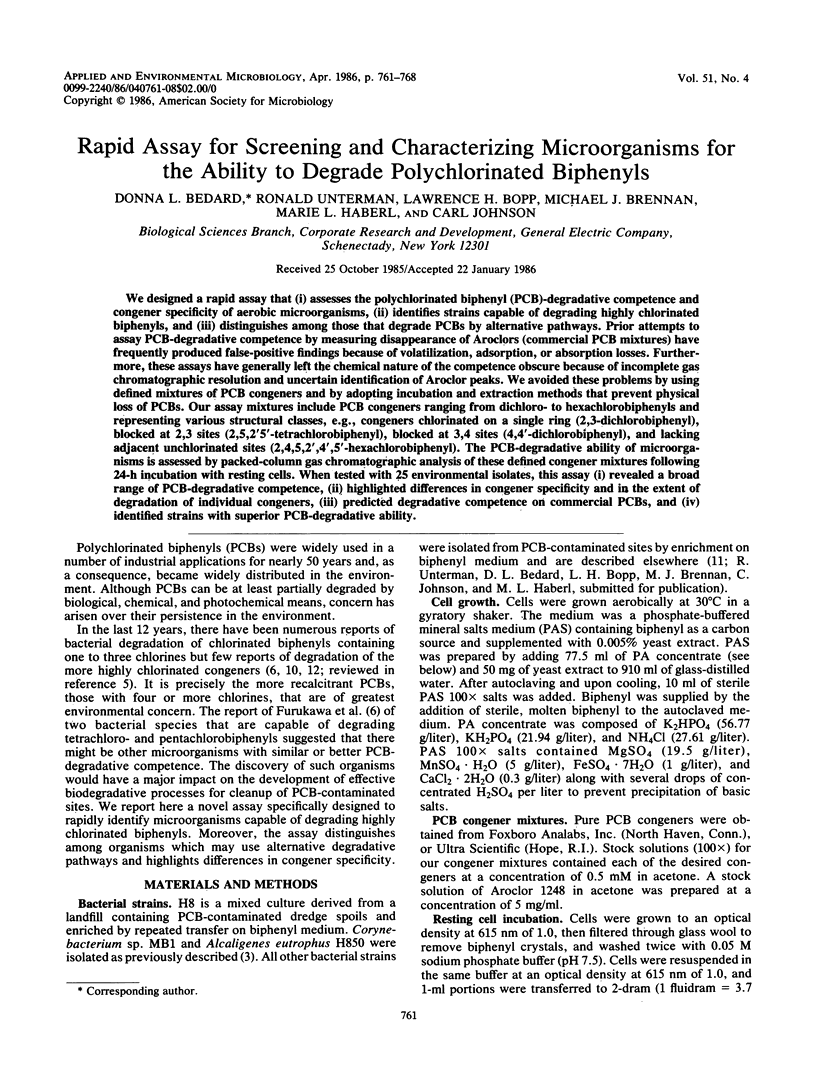
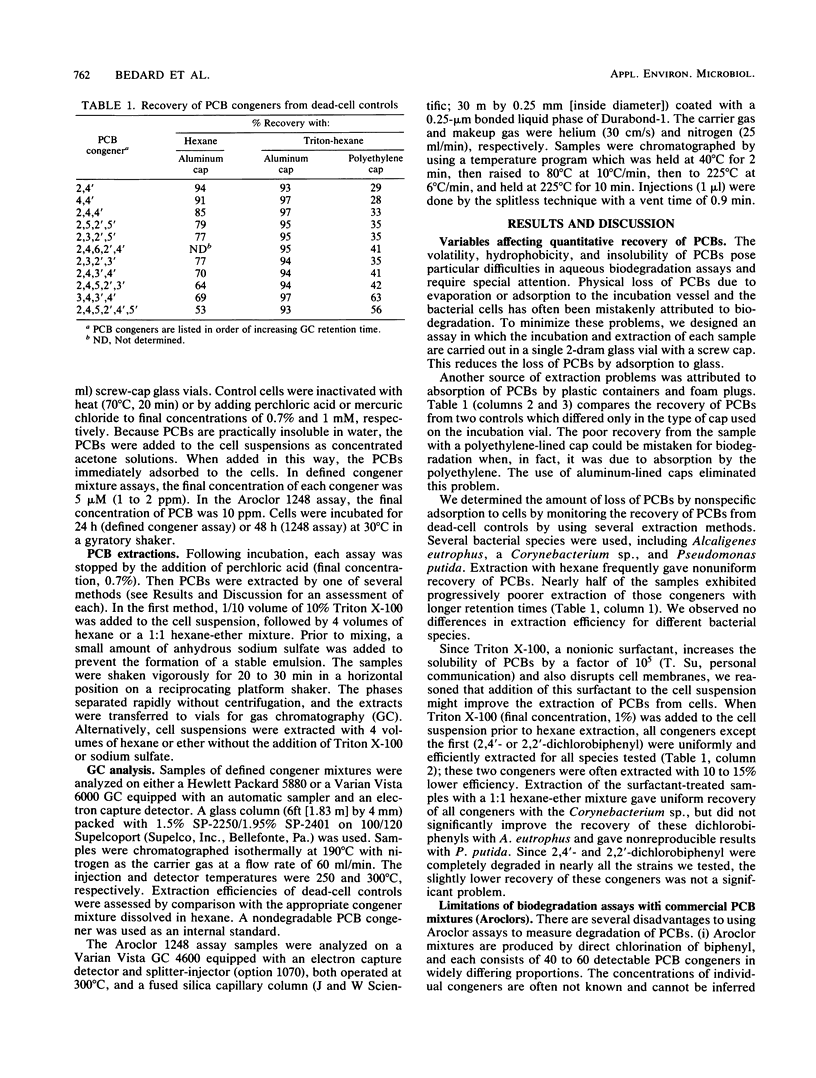
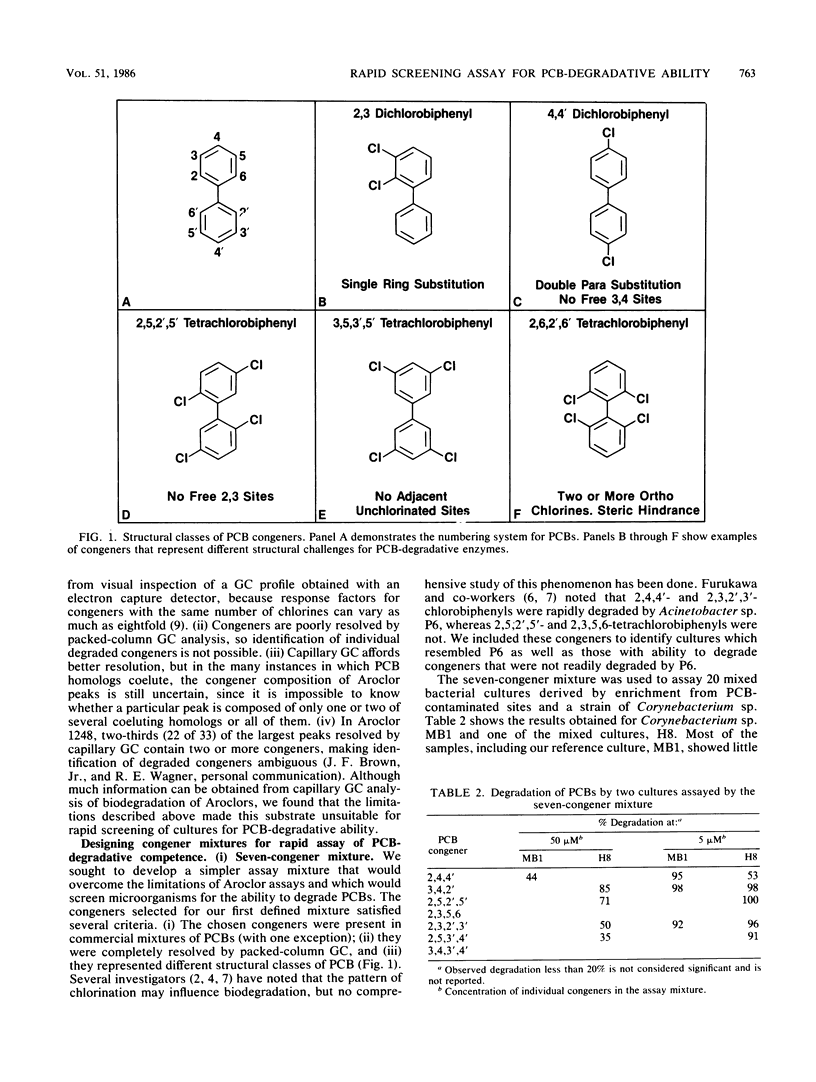
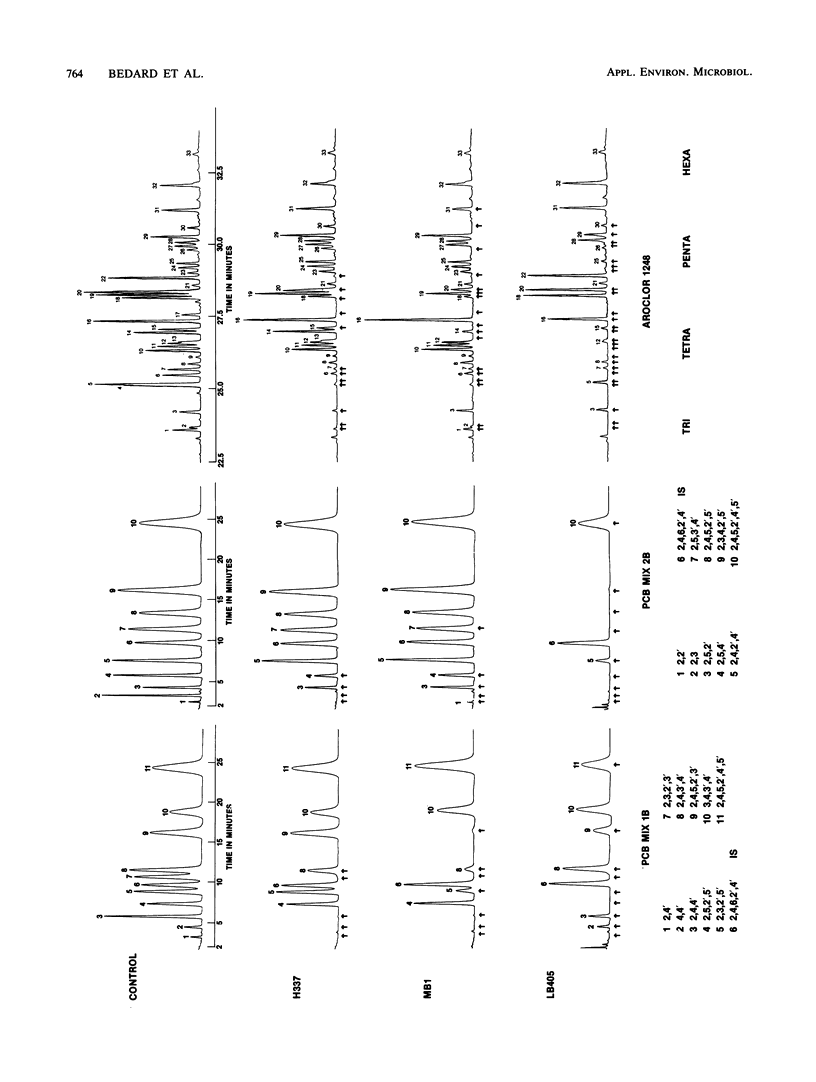
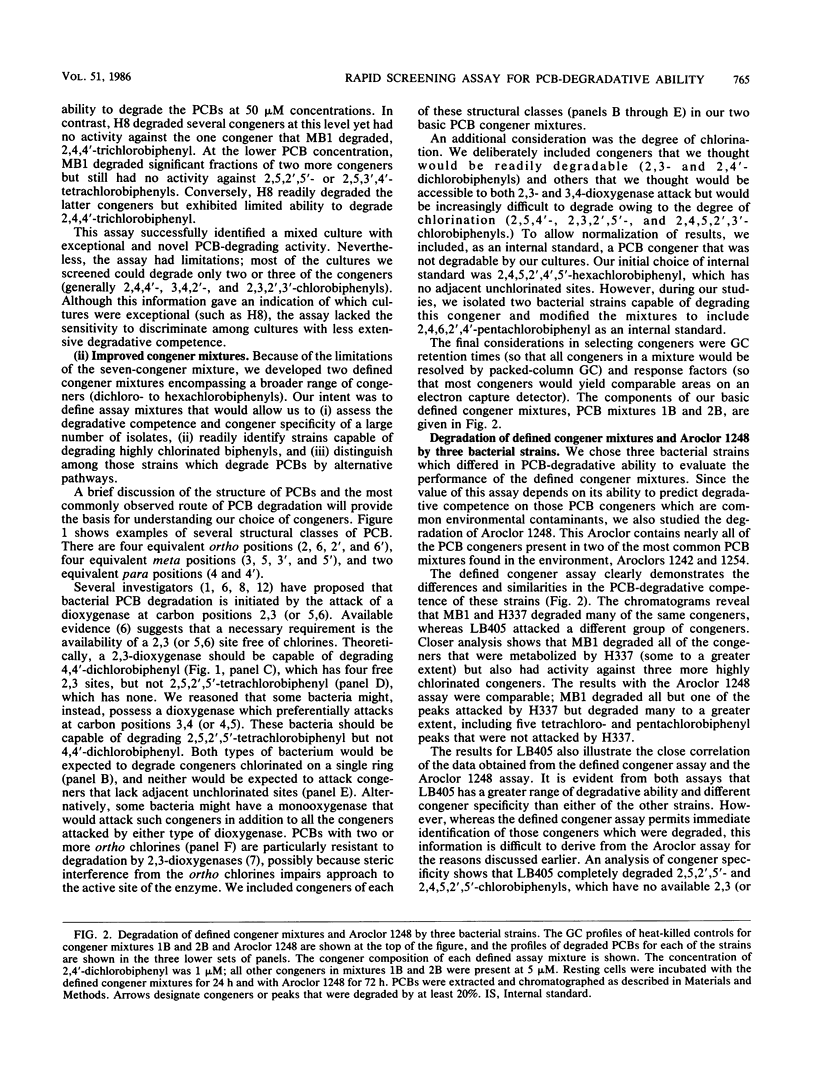
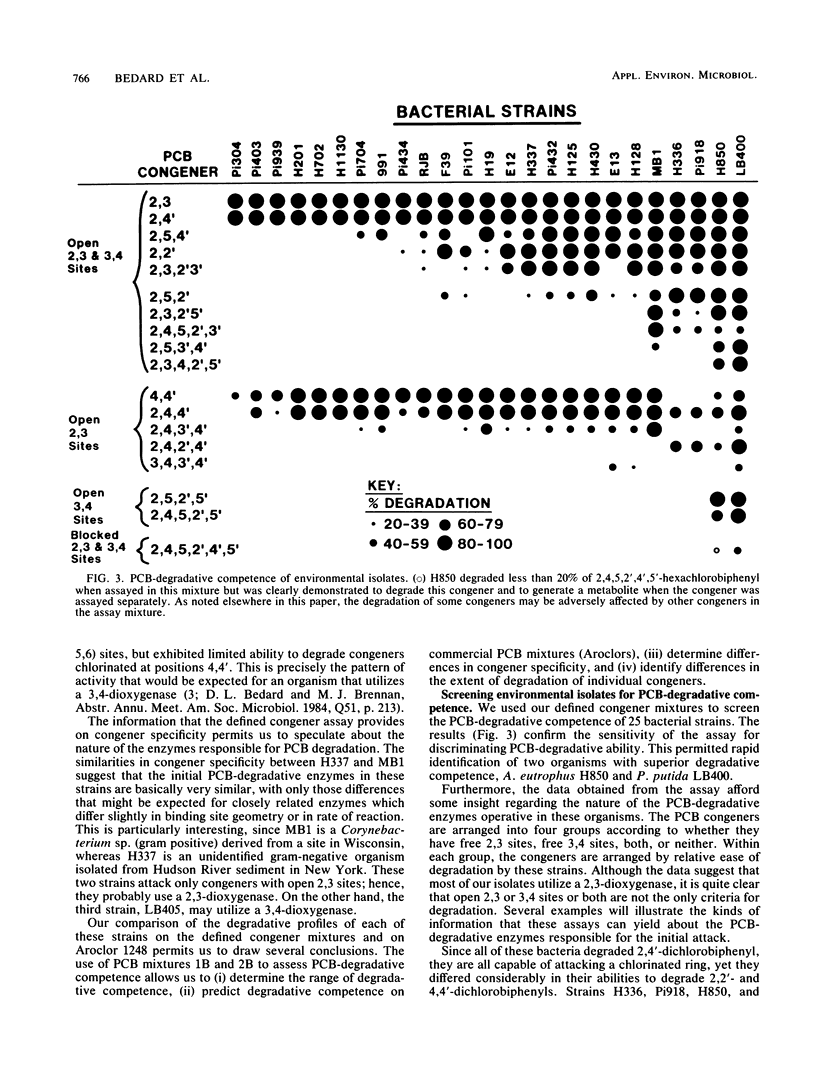
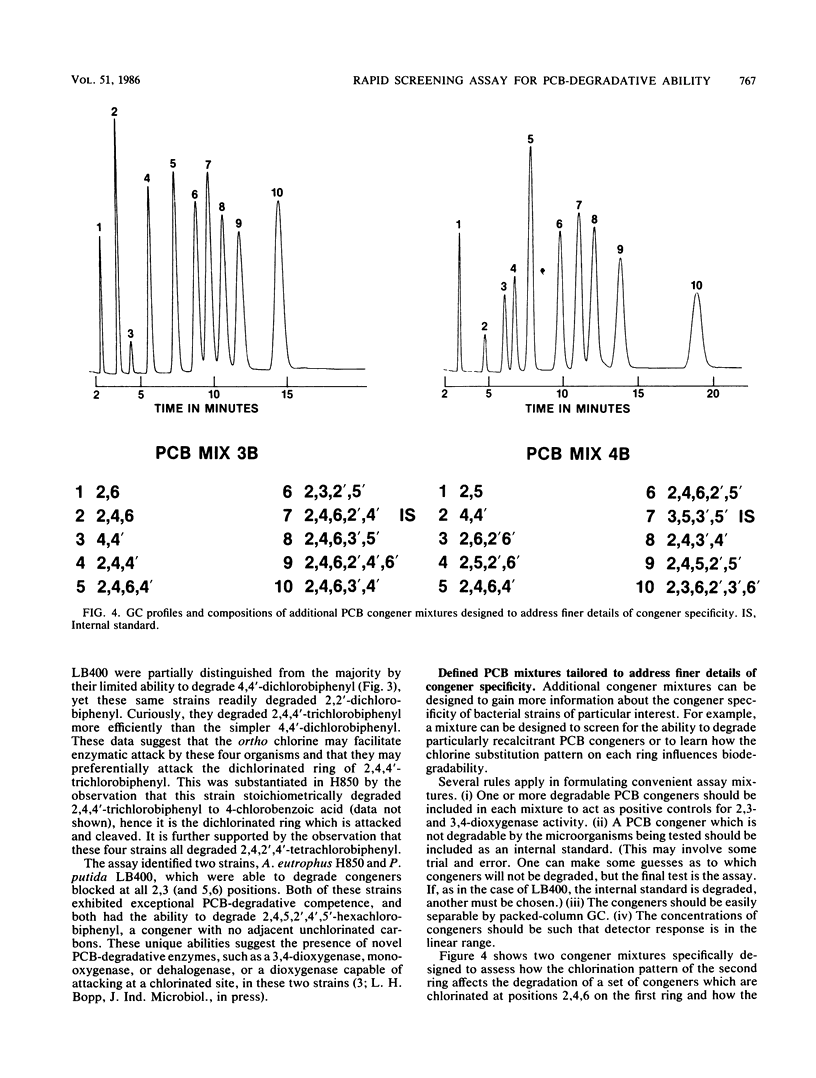
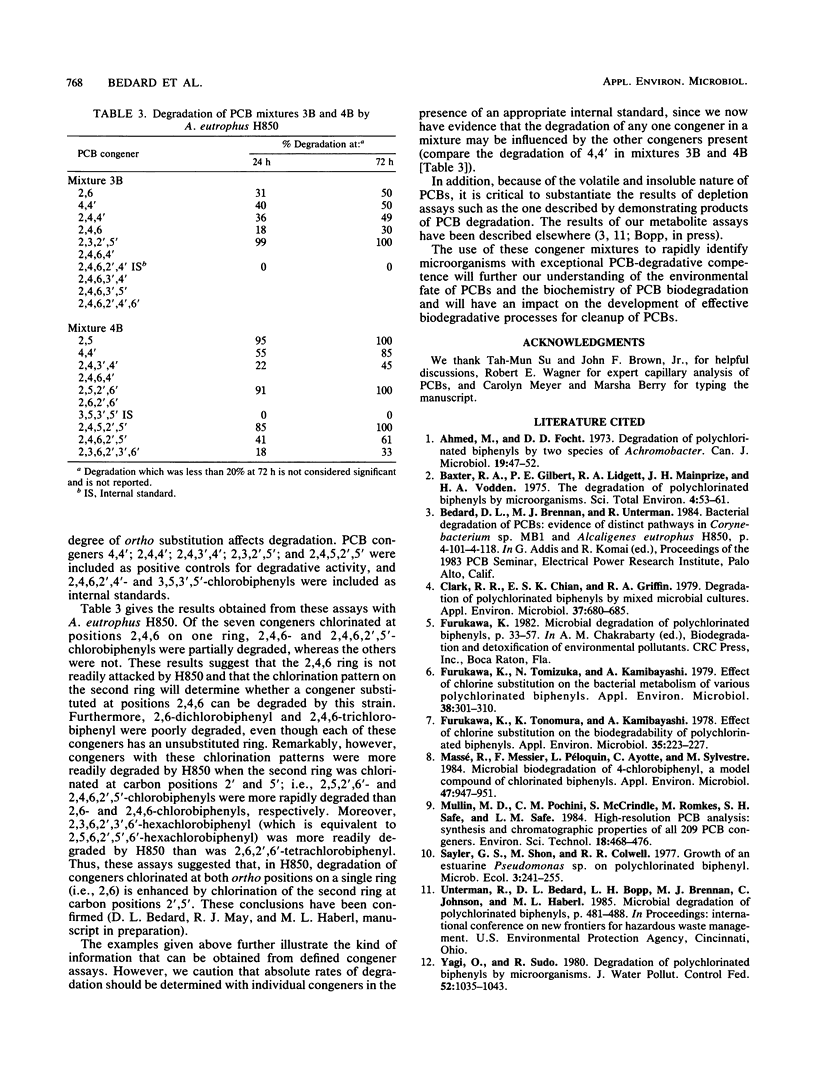
Selected References
These references are in PubMed. This may not be the complete list of references from this article.
- Ahmed M., Focht D. D. Degradation of polychlorinated biphenyls by two species of Achromobacter. Can J Microbiol. 1973 Jan;19(1):47–52. doi: 10.1139/m73-007. [DOI] [PubMed] [Google Scholar]
- Baxter R. A., Gilbert P. E., Lidgett R. A., Mainprize J. H., Vodden H. A. The degradation of polychlorinated biphenyls by micro-organisms. Sci Total Environ. 1975 May;4(1):53–61. doi: 10.1016/0048-9697(75)90014-5. [DOI] [PubMed] [Google Scholar]
- Clark R. R., Chian E. S., Griffin R. A. Degradation of polychlorinated biphenyls by mixed microbial cultures. Appl Environ Microbiol. 1979 Apr;37(4):680–685. doi: 10.1128/aem.37.4.680-685.1979. [DOI] [PMC free article] [PubMed] [Google Scholar]
- Furukawa K., Tomizuka N., Kamibayashi A. Effect of chlorine substitution on the bacterial metabolism of various polychlorinated biphenyls. Appl Environ Microbiol. 1979 Aug;38(2):301–310. doi: 10.1128/aem.38.2.301-310.1979. [DOI] [PMC free article] [PubMed] [Google Scholar]
- Furukawa K., Tonomura K., Kamibayashi A. Effect of chlorine substitution on the biodegradability of polychlorinated biphenyls. Appl Environ Microbiol. 1978 Feb;35(2):223–227. doi: 10.1128/aem.35.2.223-227.1978. [DOI] [PMC free article] [PubMed] [Google Scholar]
- Massé R., Messier F., Péloquin L., Ayotte C., Sylvestre M. Microbial biodegradation of 4-chlorobiphenyl, a model compound of chlorinated biphenyls. Appl Environ Microbiol. 1984 May;47(5):947–951. doi: 10.1128/aem.47.5.947-951.1984. [DOI] [PMC free article] [PubMed] [Google Scholar]


